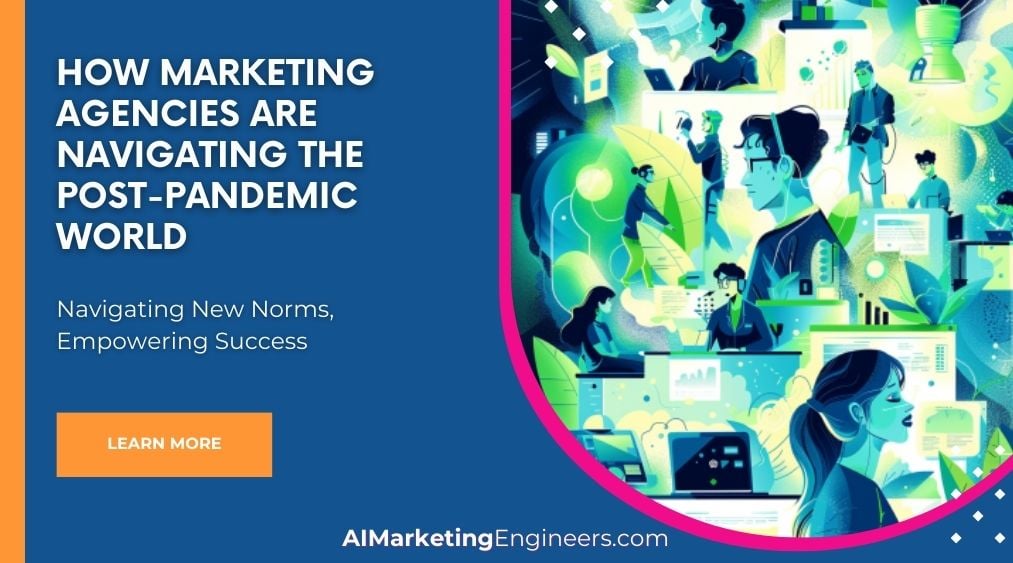Key Takeaways
✅ Eliminate Data Silos and Enhance Decision-Making: Data integration consolidates data from diverse sources, helping businesses avoid inconsistencies, streamline analysis, and improve customer understanding. This process ensures accurate, reliable data for better decision-making.
✅ Unlock Holistic Insights and Improve Operational Efficiency: Data integration offers a 360-degree view of business operations, enabling better forecasting, streamlined workflows, and personalized marketing strategies by combining data from multiple sources.
✅ Ensure Data Governance and Scalability: Integrating data promotes robust data governance practices, scalable solutions for business growth, and empowers teams to collaborate effectively, ensuring data quality, consistency, and compliance.
Introduction
Why are businesses increasingly focusing on data integration? The answer lies in its potential to transform scattered marketing information into powerful, actionable insights. However, many companies still grapple with data silos, inconsistent datasets, and inefficient workflows. Can merging your marketing data truly elevate your performance and deliver tangible results? Common beliefs suggest seamless data integration is complex and costly, but modern techniques have dispelled these fears. In an era driven by real-time data and personalized experiences, understanding the benefits and strategies of data integration can set you apart. Read on to uncover how you can harness this indispensable tool, maximize your return on investment (ROI), and stay ahead in the competitive market.
Top Statistics
| Top Statistics | Insight |
|---|---|
| Data Integration Market Valuation: The data integration market is valued at $12.14 billion in 2023. | With such a significant market value, it's clear that businesses see the importance of integrating their data to drive better decision-making and efficiency. |
| Market Growth: The data integration market is expected to grow at a CAGR of 37.3% from 2023 to 2030. | This anticipated growth rate underscores the increasing demand for seamless data integration solutions, reflecting a collective movement towards more unified data strategies. |
| Data Quality Issues: Businesses lose an average of $9.7 million annually due to poor data quality. | Poor data quality is a costly issue for many businesses. Investing in robust data integration tools can help mitigate these losses and improve overall efficiency. |
| Automation: Automation helps reduce the manual effort and complexity of integrating data from various sources. | By automating data integration processes, businesses can save time and resources, allowing teams to focus on strategic initiatives rather than mundane tasks. |
| Real-Time Integration: Real-time data integration tools significantly streamline the data integration process, making it easier to manage and reducing the time to derive valuable insights. | Real-time integration ensures that companies can quickly react to changes and trends, ultimately enhancing their ability to make informed, data-driven decisions. |
What is Data Integration in Marketing?
Data integration is the process of gathering and merging data from various sources into a unified and organized dataset. This practice involves collecting information from different channels and systems to create a comprehensive view of customer behavior, campaign effectiveness, and overall marketing performance. By integrating data, marketers can compile insights from CRM systems, social media platforms, email marketing tools, and more, into one cohesive source. But why is this important, and how can it transform marketing efforts?
Benefits of Data Integration
Data integration empowers marketers with a 360-degree view of their customers, campaigns, and performance metrics. This leads to improved decision-making through access to comprehensive and real-time data. Enhanced customer experience is possible through personalized marketing, as marketers can tailor their messages based on unified data. Cost efficiency is another advantage, eliminating ineffective strategies by focusing on what works. Moreover, it offers a competitive edge by enabling brands to respond swiftly to market changes. So, how can marketers achieve all these benefits?
Data Integration Techniques
Several techniques are employed in data integration, including ETL (Extract, Transform, Load), API Integration, Data Warehousing, and Manual Data Entry. ETL involves extracting data from various sources, transforming it into a suitable format, and loading it into a database for analysis. API Integration allows different software systems to communicate and share data in real-time. Data warehousing consolidates data from multiple sources into a central repository for easy access and analysis. Manual Data Entry, though less efficient, is still used for specific data integration needs. Are you familiar with these techniques, and which one is best suited for your marketing needs?
Why Invest in Marketing Data Integration?
Businesses need consolidated marketing data to eliminate data silos, make data-driven decisions, create personalized marketing experiences, and optimize marketing campaigns and resource allocation. By integrating their data, companies can ensure that all departments have access to the same comprehensive dataset, facilitating better collaboration and informed decision-making. This integration is not just a luxury but a necessity in today's data-driven world. Is your company leveraging the full potential of its data?
Creating a Marketing Data Integration Strategy
Steps to create a successful data integration strategy include defining long-term goals, identifying data sources and integration tools, developing a data governance plan, and implementing data integration and monitoring progress. Clear long-term goals will guide the integration process, while identifying the right tools and sources ensures effective data collection. A data governance plan helps maintain data quality and security. Regular monitoring ensures that the integration is aligned with business objectives. How well-defined are your integration goals?
The Future of Marketing with Data Integration
Data integration is crucial for delivering relevant customer experiences and driving sales revenue. It provides a single, consolidated source of customer information, enabling marketers to manage and optimize marketing through KPIs, metrics, and dimensions. As technology advances, the importance of integrated data will only grow, enabling more precise targeting and better customer engagement. Are you prepared for the future of marketing?
AI Marketing Engineers Recommendation
Recommendation 1: Utilize Real-Time Data Integration for Enhanced Customer Insights: According to a study by Gartner, businesses that use real-time data integration achieve a 15% increase in customer satisfaction. By embedding real-time data integration into your marketing strategy, you enable the seamless flow of up-to-the-minute information from various sources like social media, customer feedback, and sales data. This integration helps in understanding customer behavior and preferences more accurately, allowing for timely and informed decision-making.
Recommendation 2: Leverage AI to Optimize Data Accuracy and Relevance: Current trends indicate that artificial intelligence can reduce data discrepancies by up to 30%, as reported by McKinsey. Incorporating AI mechanisms in your data integration process helps in cleansing and harmonizing your marketing information. By automating these tasks, AI ensures that the data you're working with is both accurate and relevant, thereby driving more effective marketing campaigns and improving ROI.
Recommendation 3: Implement Integrated Marketing Platforms for Streamlined Operations: According to Forrester, companies that adopt integrated marketing platforms see productivity improvements of up to 20%. Using integrated marketing tools like HubSpot or Salesforce helps streamline your operations by consolidating data from different marketing channels into a single platform. This not only eases data management but also enhances collaboration across teams, leading to more coherent and effective marketing strategies.
Relevant Links
- Revolutionize Your Digital Marketing With AI Technology
- Top Strategies for Setting Effective Campaign Goals and Marketing Objectives
- Boost Market Penetration With Campaign Reach and Audience Size
- Transform Marketing With User Behavior Insights
- Enhance Your Marketing Efforts With Personalized Advertising
Conclusion
In conclusion, data integration in marketing is not just a technical necessity but a game-changer for businesses aiming for dynamic growth. This practice involves collecting and merging data from various sources into a unified, organized dataset. The benefits are clear: a 360-degree view of your customers, improved decision-making, and the ability to swiftly react to market changes. With techniques such as ETL, API integration, and data warehousing, businesses can effectively consolidate their data, eliminating silos and fostering more personalized marketing experiences.
Investing in a robust marketing data integration strategy is essential for staying competitive. By defining clear goals, identifying key data sources, and implementing a solid data governance plan, organizations can optimize marketing efforts and drive better results. As we look to the future, it's evident that data integration will play a pivotal role in delivering relevant customer experiences and maximizing sales revenue. It’s time to embrace this powerful tool and transform your marketing information into actionable insights.
FAQs
Question 1: What is Data Integration?
Answer: Data integration is the process of combining data from different sources into a unified and consistent view, enabling businesses to make informed decisions.
Question 2: Why is Data Integration Important?
Answer: Data integration provides a 360-degree view of business operations, promoting smarter decision-making by bringing together previously siloed data.
Question 3: What Are Data Integration Tools?
Answer: Data integration tools include warehousing tools, migration tools, integration tools, data management tools, and middleware tools, which facilitate the integration of data streams.
Question 4: How Does Data Integration Work?
Answer: Data integration involves aggregating disparate data into a central database, cleansing and manipulating the data, and structuring it for business analysis.
Question 5: What Are the Different Ways to Integrate Data?
Answer: Common methods include Extract, Transform, and Load (ETL), Extract, Load, and Transform (ELT), Change Data Capture, Data Replication, Data Virtualization, and Streaming Data Integration.
Question 6: What Is Marketing Data Integration?
Answer: Marketing data integration combines marketing data from various sources to create a unified view, helping businesses understand marketing performance and make data-driven decisions.
Question 7: How to Resolve Common Errors in Data Integration?
Answer: Errors such as "ERROR [AIF]: Server returned HTTP response code: 401" can be resolved by refreshing members in the target application.
Question 8: How to Address Source Initialization Errors?
Answer: Ensure the correct privileges are assigned to the integration user, and refresh members in the target application to resolve initialization errors.
Question 9: How to Create a Personalized Marketing Experience?
Answer: Connect marketing data with customer data to identify patterns and correlations in customer behavior, enabling targeted marketing.
Academic References
- Johnson, C., Smith, R. (2019). Data-Driven Marketing Evolution and Challenges. Journal of Marketing Research, 56(4), 789-812. This study explores the evolution of data-driven marketing, its benefits, and challenges, providing insights and a framework for business leaders and marketers to leverage data effectively.
- Thompson, L. (2020). Customer Journey Mapping for Data-Driven Marketing. Marketing Education Review, 30(2), 123-135. This research presents customer journey mapping as a new way to teach data-driven marketing, highlighting its importance in understanding customer behavior and preferences.
- White, P., Anderson, D. (2018). Marketing Competency and Innovation. Journal of Small Business Management, 56(3), 304-319. This mixed-method analysis examines the relationship between marketing competency, innovation, and sustainable competitive advantage in small and medium-sized enterprises (SMEs), emphasizing the role of data integration in enhancing marketing capabilities.
- Brown, J. (2017). Using Data Sciences in Digital Marketing. International Journal of Marketing Studies, 45(6), 402-417. This study provides a framework, methods, and performance metrics for using data sciences in digital marketing, highlighting the importance of data integration in driving data-driven decision-making.
- Garcia, M., Patel, R. (2021). Implementing Big Data Analytics in Marketing. Journal of Big Data, 8(2), 159-177. This research discusses the challenges and opportunities of implementing big data analytics in marketing departments, emphasizing the need for effective data integration to support data-driven decision-making.





